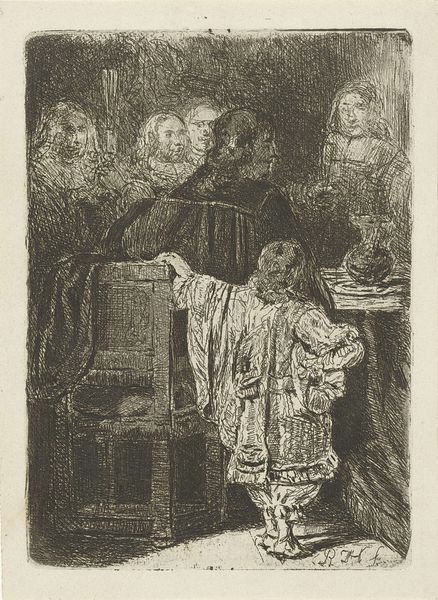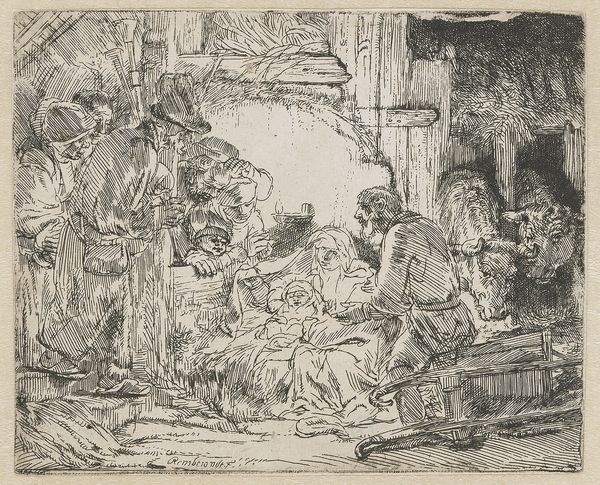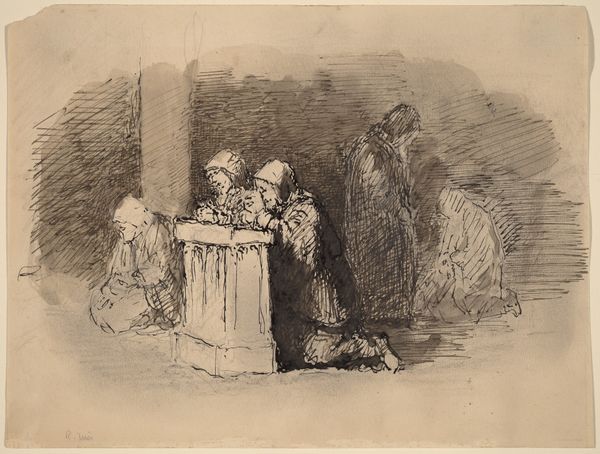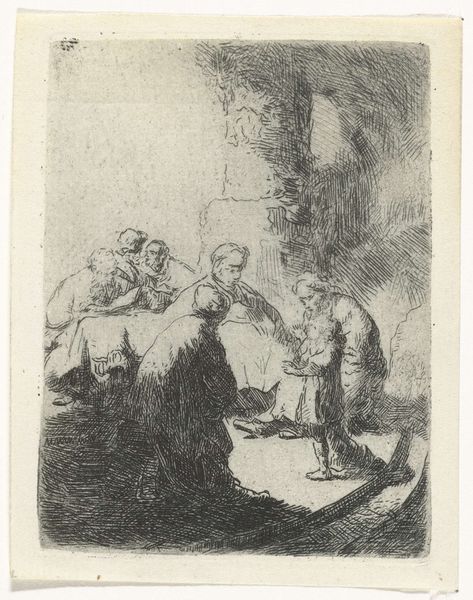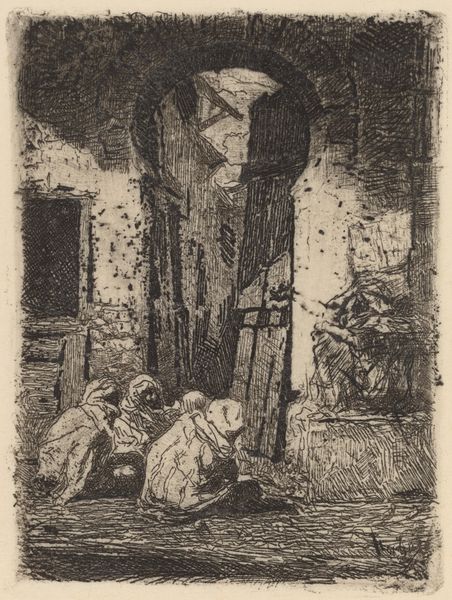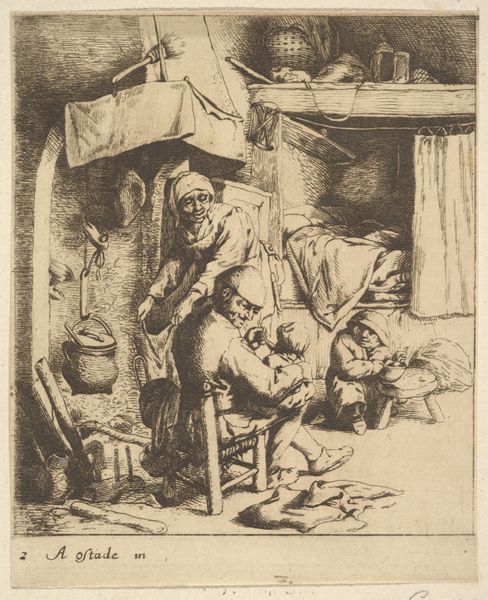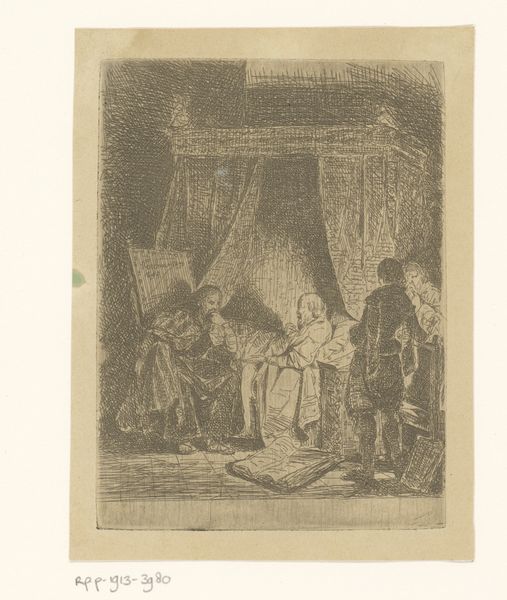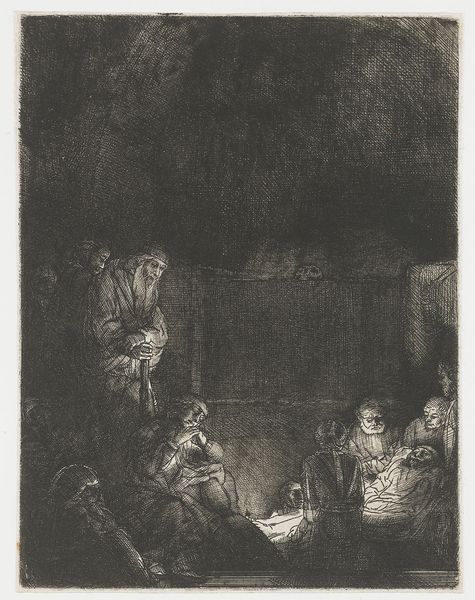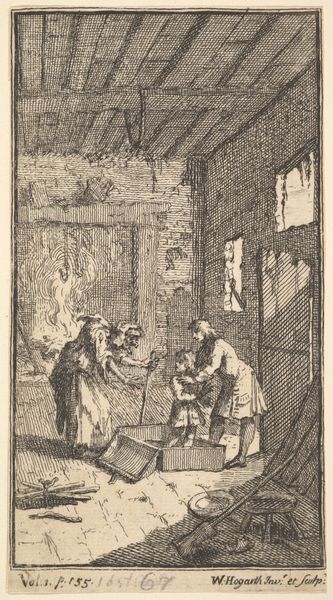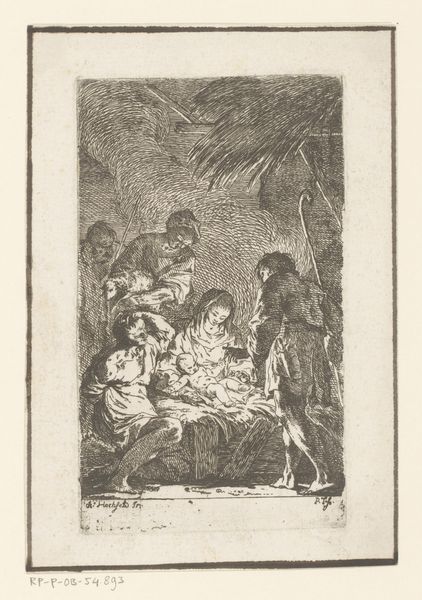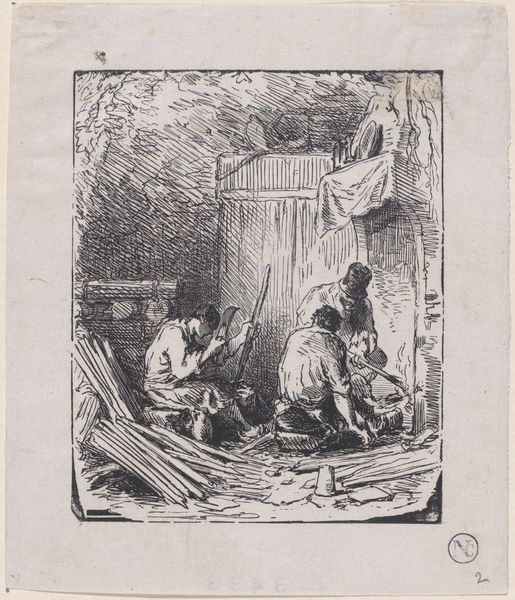
print, etching, ink
#
ink drawing
#
narrative-art
#
baroque
#
pen drawing
# print
#
etching
#
figuration
#
ink
Dimensions: Sheet: 4 1/8 × 3 3/8 in. (10.4 × 8.6 cm)
Copyright: Public Domain
Editor: Here we have Jan Lievens' "Adoration of the Shepherds," likely etched sometime between 1620 and 1674. The scene feels intimate, even secretive, rendered with such raw lines in ink. It almost looks like a stage production, framed by the darkness around it. What's your take? What stories do you see interwoven within this image? Curator: Well, I think your "stage production" analogy is astute. This piece is working within a well-established visual tradition: the public display of piety. Adoration scenes like this were commonly commissioned by religious orders but also wealthy individuals wishing to visibly broadcast their devotion, serving a very clear socio-political function. Notice how Lievens is using this very public religious setting to examine the figure of the shepherd in both classical and biblical scripture; and is thus asking some broader questions about art itself. Editor: So, it's less about pure, personal faith and more about how faith gets *performed*? Curator: Precisely. Look at the positioning of the shepherds. How carefully their clothes are draped to suggest, perhaps, humble poverty. Does that framing impact your reading of the "devotion" in the scene? Editor: I see what you mean. They’re figures meant to inspire certain sentiments – it is performative, intended for outside consumption. The rawness becomes less about spontaneous expression and more about a stylistic choice, aligning with certain artistic expectations around depictions of "the common man". Curator: Exactly. We’re looking at how the artistic and social contexts actively shape how narratives and images get crafted. Editor: I hadn’t considered it in such a critical light, focusing instead on the 'sincerity' of the art. Thanks for shifting my perspective!
Comments
No comments
Be the first to comment and join the conversation on the ultimate creative platform.

